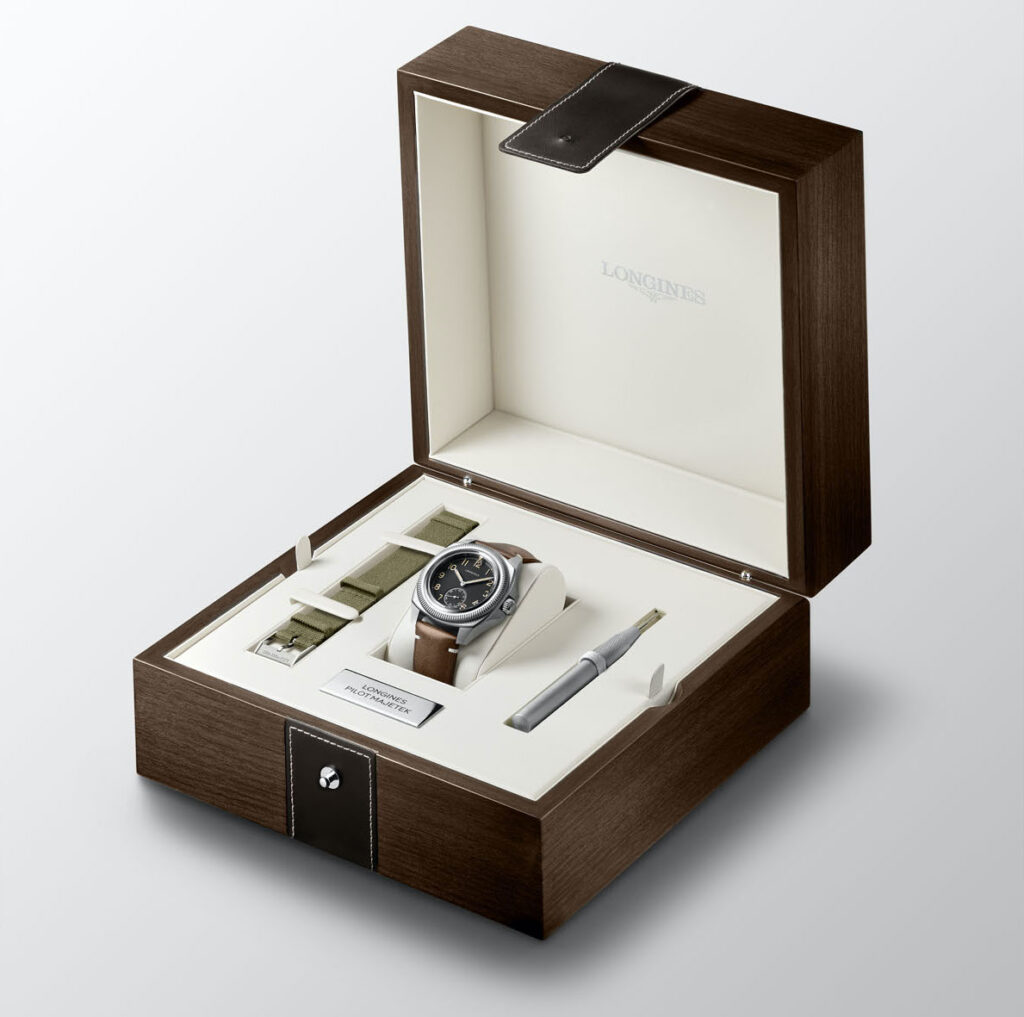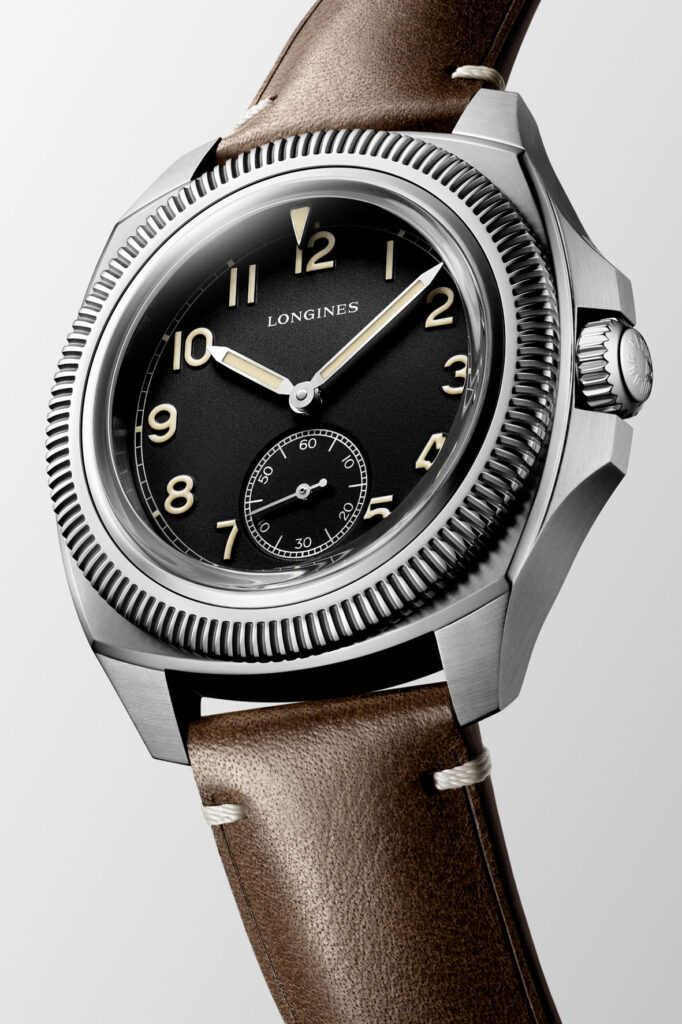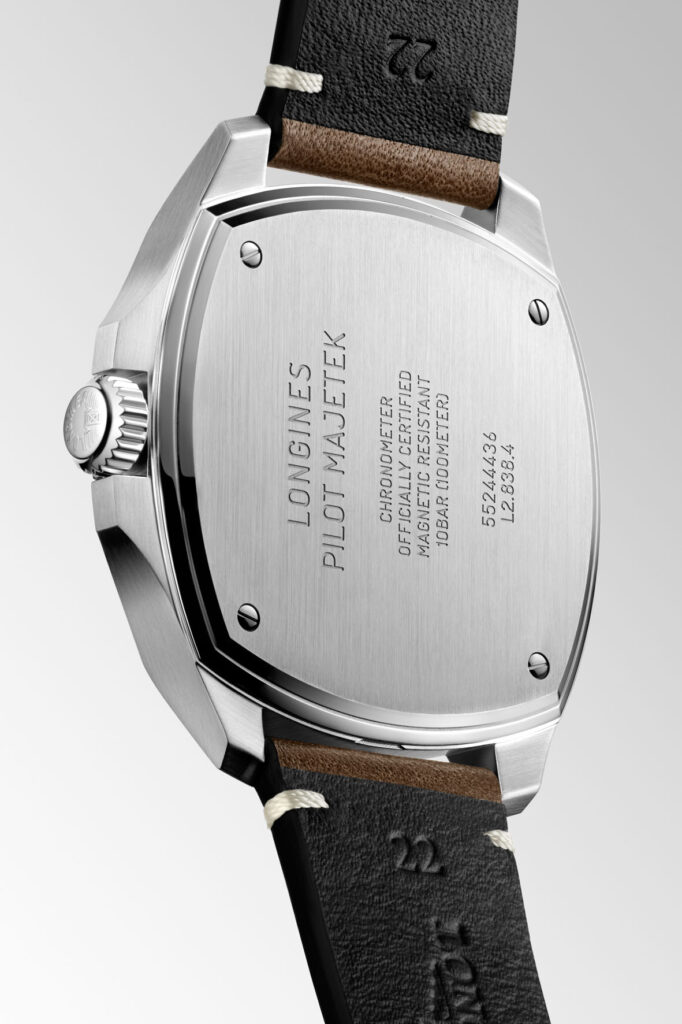Longines Pilot Majetek, A Flight Through History
3 March 2023Starting from its logo, a winged hourglass, Longines embodies the essence of flight. A bond between the Saint Imier brand and aviation that has given life to professional watches which, over time, became symbols of the brand. Some of these watches have gone down in history, others less known have been “recovered” by Longines, which has given them new life and a touch of modernity. The latest example is that of the Pilot Majetek.
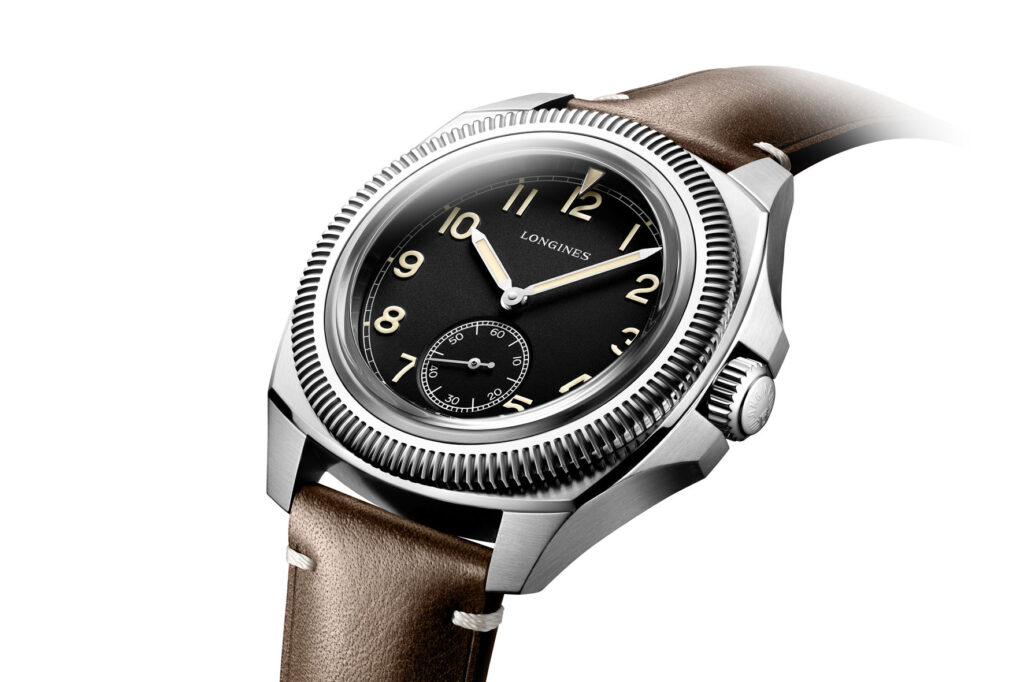
LONGINES PILOT MAJETEK: THE ORIGINS
A watch with an unusual name, which probably doesn’t mean anything to anyone who doesn’t know deeply Longines’ history, but which is part of its great tradition of pilot’s watches. A tradition that – in addition to civil aviation, and with the epic of the great flight pioneers – also developed in the military aviation. That’s where the Longines Pilot Majetek comes from.
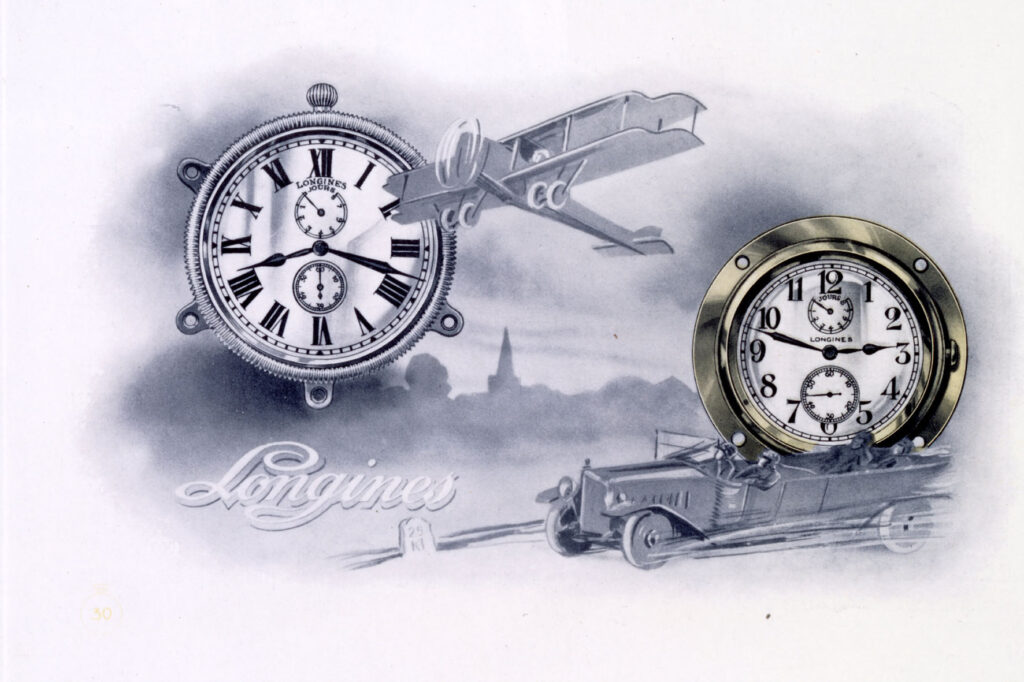
WWII is ongoing and Czechoslovakia has just been annexed by the Third Reich. It’s 1939. As events escalate, some Czech pilots leave their country and join the British Royal Air Force. On their wrists they wear the ancestor of the Longines Pilot Majetek, with the inscription “Majetek Vojenské Spravy,” “property of the Czechoslovakian army,” engraved on the case back.
Those pilots, who had gone over to the Allies’ side, fought bravely during the Battle of England – many of them wearing Longines watches, whose production for the Czechoslovakian air force began in 1935 and continued until after the world war, in 1948.
THE BEZEL AND THE DIAL
The aesthetics of the original Longines Pilot Majetek was that which characterized the pilots’ watches of the time: they could rely on a large fluted bezel to which a triangular-shaped indicator was connected, showing the time elapsed since the start of an event. In addition to the bezel, the indicator rotated together with the watch glass.
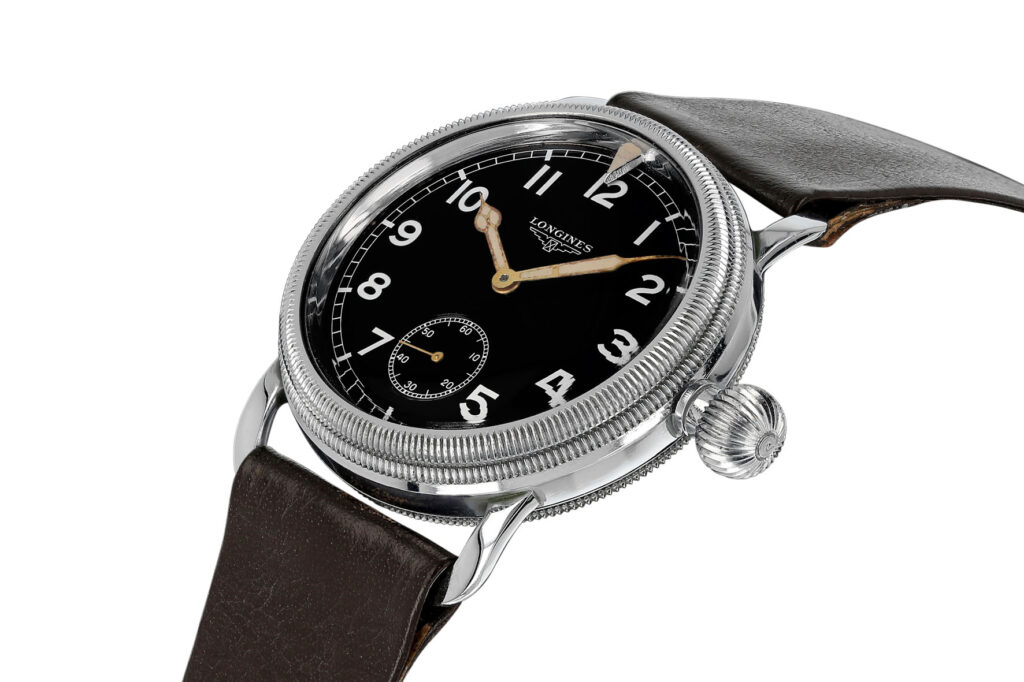
The dial was black and had large Arabic numerals covered in radio-luminescent material, as well as cathedral hands. All enclosed in a sturdy cushion-shaped 40 mm steel case that had inspired the nickname “big turtle” for that Longines.
At Baselworld 2014, the brand presented the Heritage 1935 model, also inspired by the Majetek, but with some important differences from the original model. Among others, the date at 6 o’clock and the size of the case, which went from 40 mm to 42 mm.
A LARGER CASE
Also, the case of the new Longines Pilot Majetek is simultaneously the greatest similarity and the most important difference with the watch from the 1930s. If the cushion shape and the aesthetics closely recall the ancestor, the size has instead increased from 40 mm to the more contemporary 43 mm, skipping the 42 of the 1935 Heritage. We also note the addition of the crown protector shoulders, another difference with the inspiring timepiece.
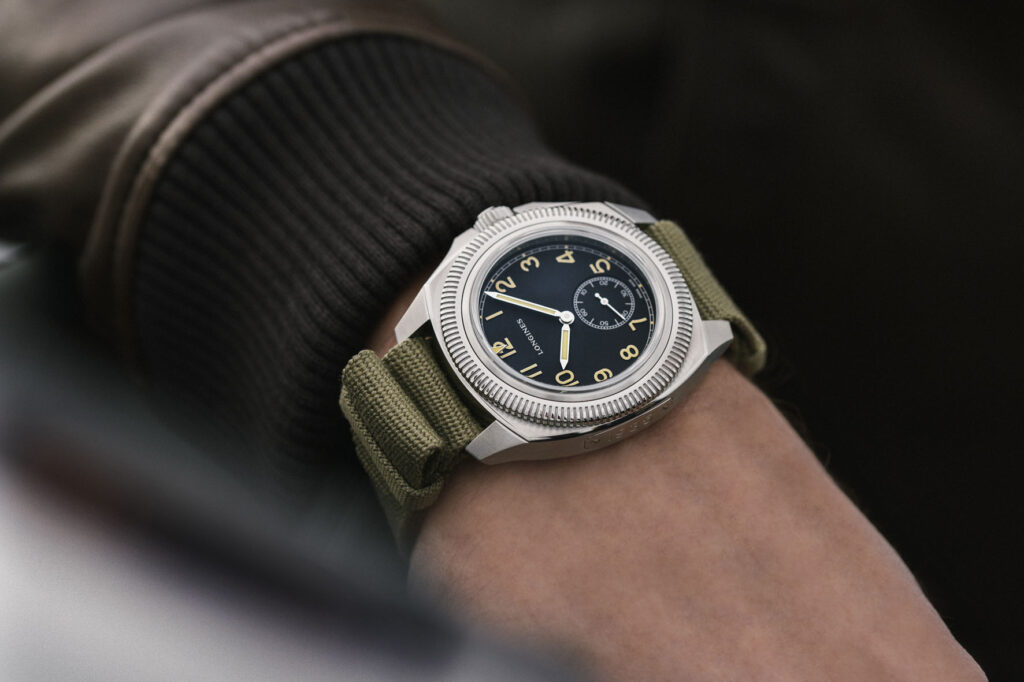
The knurled bidirectional bezel remains together with the triangular fluorescent indicator called “Starting time indicator.” This is connected to the bezel, as in the original Majetek, but is located between the dial and the anti-reflective sapphire crystal. It is disconnected from the crystal, reinforcing the waterproofness of the case.
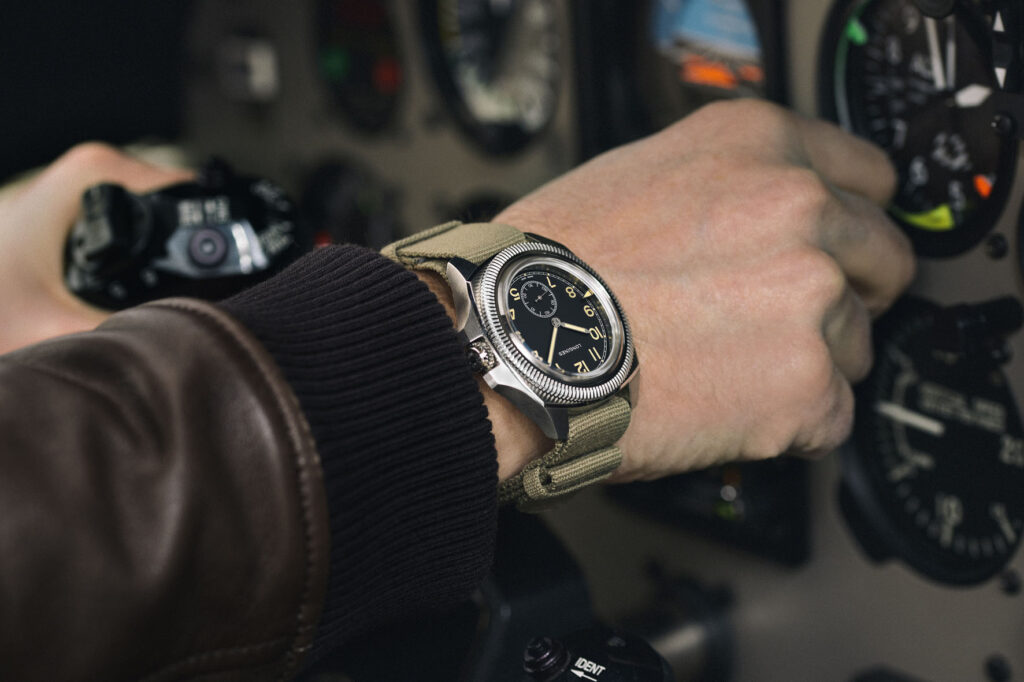
THE DIAL WITH A PILOT LOOK
The dial of the Longines Pilot Majetek is faithful to the aesthetics of pilot watches of the past, and shares many affinities with the inspiring timepiece. The matte black color highlights the indexes with Arabic numerals, whose visibility is obviously no longer aided by radium but by the more modern Super-LumiNova coating. However, Longines has chosen a type with a shade called “old radium” whose color, when it becomes luminescent, recalls the vintage nuance of the past and highlights the vintage inspiration of the watch.
In addition to the indexes, the hours are marked by the chemin-de-fer minute track, which is also in the small-second counter at 6 o’clock. The hands are baton-shaped, unlike those of the original Majetek which, as mentioned earlier, were cathedral-shaped. The vintage font of the logo is in block letters while originally it was in italics.
THE MOVEMENT AND THE STRAP
There is little to say about the movement, one of the most reliable Longines calibers. We are talking about the L893.6 caliber, a movement based on ETA A31.L91 and equipped with a silicon hairspring, now standard on the brand’s finest watches, which shields the movement from magnetic fields.
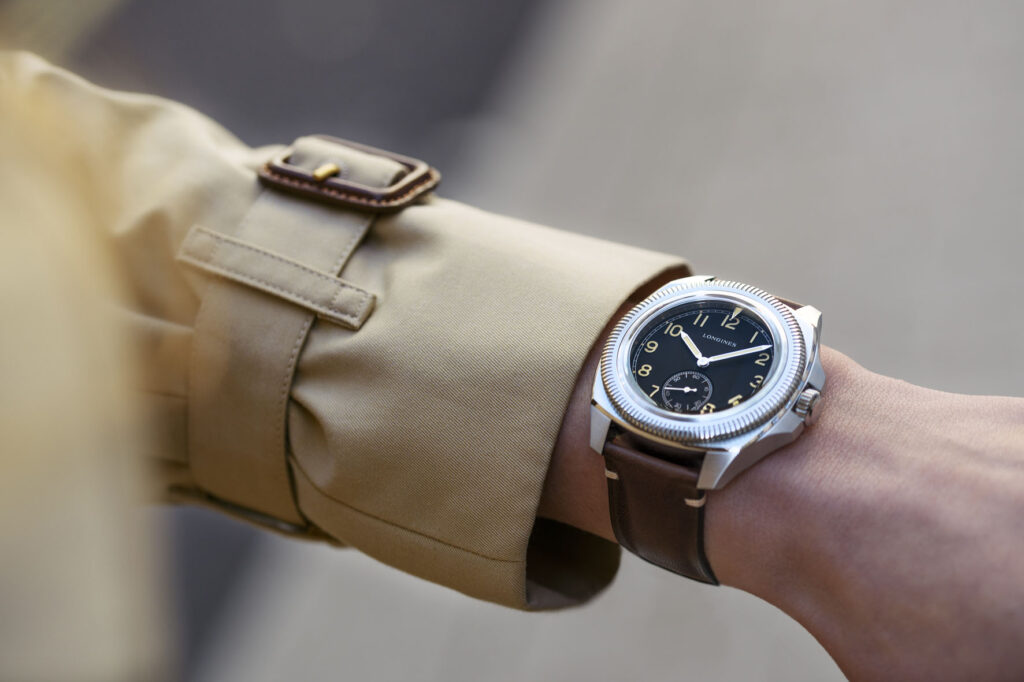
It oscillates at a not excessively high frequency, 25,200 vibrations/hour, giving it a power reserve of 72 hours. Last but not least, the L893.6 caliber has COSC chronometer certification. Mounted on such a watch, it means that Longines wants to keep the quality bar high.
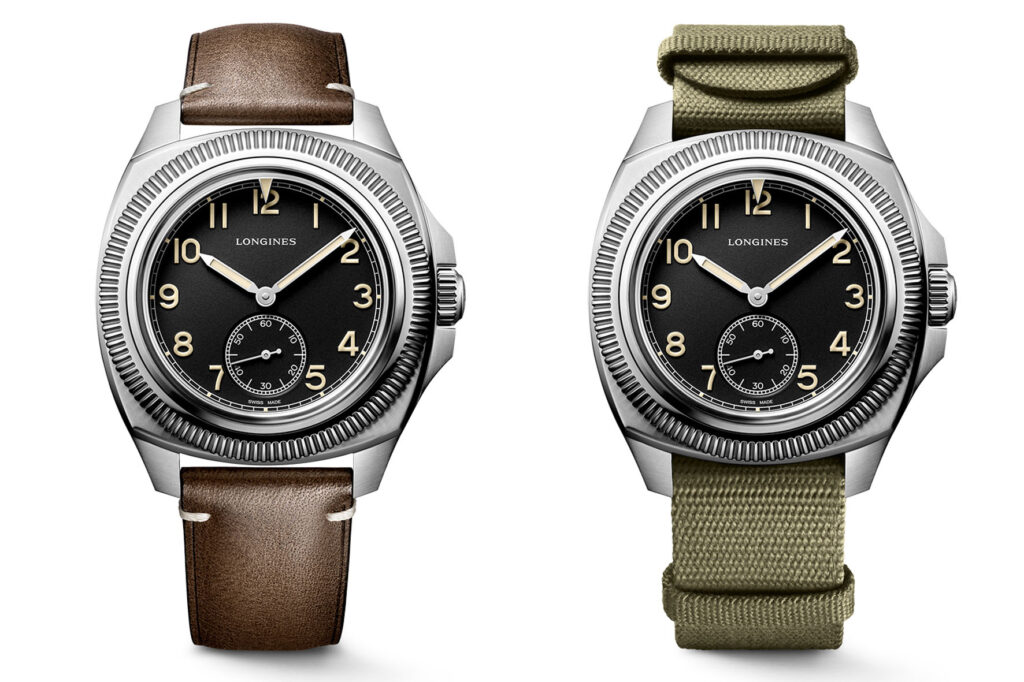
Finally, let’s talk about the strap. Three different types are available for the Longines Pilot Majetek: in green leather or brown leather, both with beige-coloured topstitching, or green NATO in polyester fibers, designed from recycled materials. Hooked onto the rather short lugs of the watch, they guarantee a discreet fit even on smaller wrists. The watch costs 4,000 euros, regardless of the strap that comes with it.
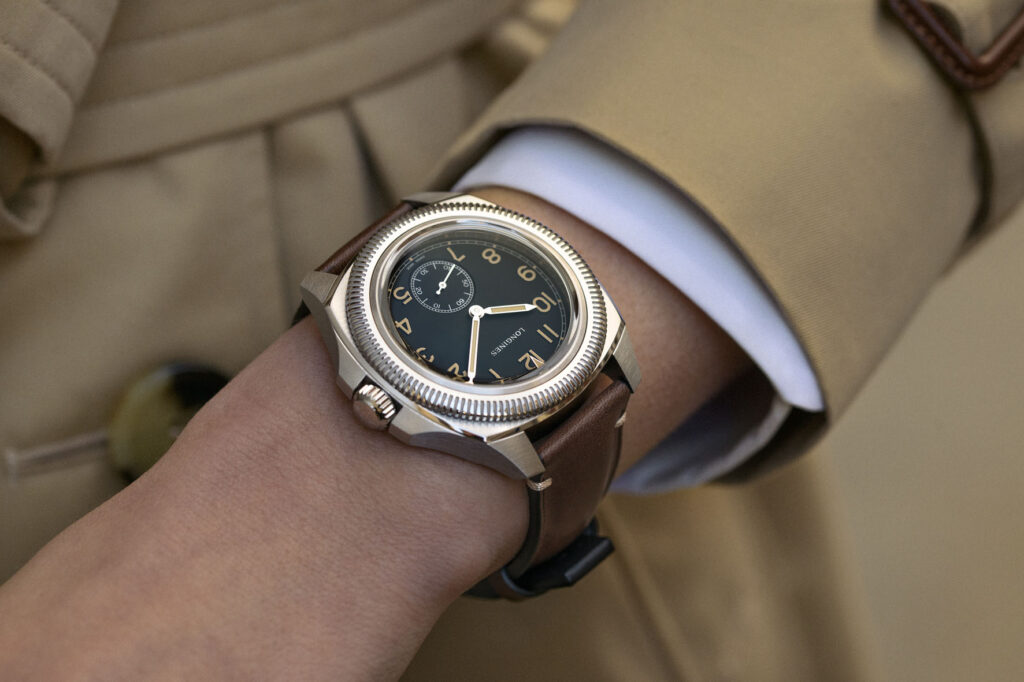
Ultimately it is a watch with a strong character, which interprets the pilots’ aesthetics with a touch of personality standing out from the pack. In fact, the Longines Pilot Majetek has both the adventurous soul of a flight pioneer and a more urban soul, which makes it suitable for daily life even “at ground level.” Nodding to a story made of courage and heroism.
By Davide Passoni
